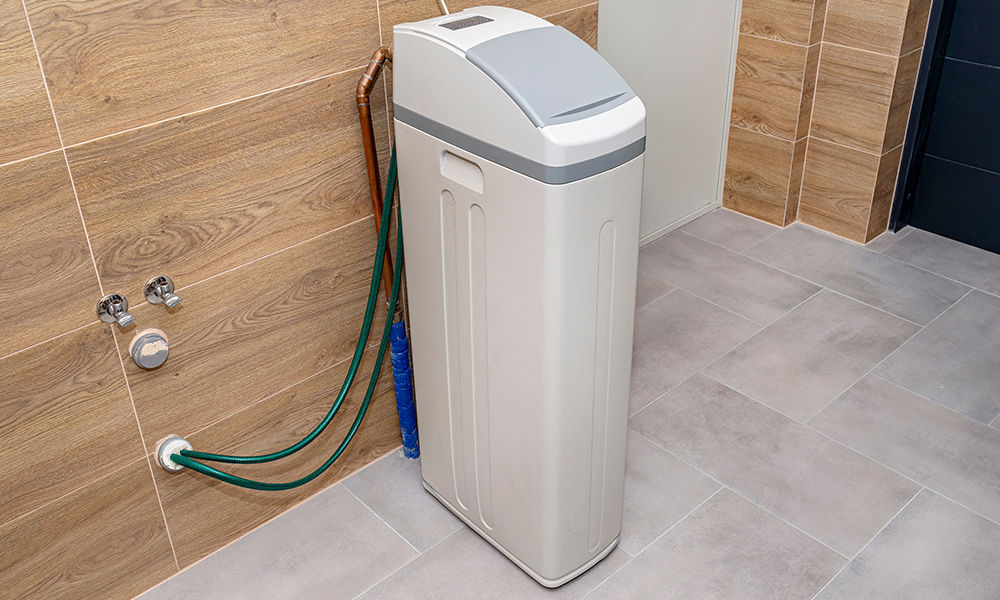Water softeners are a great way to improve the quality of your water, but they can be tricky to clean. Here are 5 professional tips on how to clean your water softener:
Before You Start – Test Your Water Softener
Before you start cleaning your water softener, it’s important to test it to see if it’s working properly. You can do this by checking the hardness of your water with a water hardness test kit. If the water is still hard after running through the water softener, then it’s time to clean it.
How to Clean a Water Softener
1. Backwash the Water Softener
One of the most important steps in cleaning your water softener is to backwash it. This will remove any sediment or debris that has built up in the system. To backwash your water softener, follow these steps:
-Turn off the power to the unit.
-Set the control valve to the “backwash” position.
-Turn on the water to the unit and let it run for 5 minutes.
-Turn off the water and set the control valve to the “off” position.
-Turn on the power to the unit and let it run for 1 minute.
-Turn off the power to the unit and set the control valve to the “brine” position.
-Fill the brine tank with a sodium chloride solution and let it soak for 24 hours.
3. Clean the Brine Tank
After you’ve backwashed your water softener, it’s important to clean the brine tank. This is where the sodium chloride solution is stored that is used to clean the water softener. To clean the brine tank, follow these steps:
-Empty the brine tank and remove the salt from the unit.
-Wash the brine tank with a mild soap and water solution.
-Rinse the brine tank with clean water.
-Fill the brine tank with fresh water and add new salt to the unit.
3: Use Vinegar and Baking Soda for the Interior
To clean the interior of your water softener, you can use a vinegar and baking soda solution. This will remove any build-up that has accumulated on the interior surfaces. To clean the interior, follow these steps:
-Turn off the power to the unit.
-Remove the salt from the unit.
-Pour 1 cup of vinegar into the brine tank.
-Add 1/2 cup of baking soda to the brine tank.
-Fill the brine tank with fresh water and add new salt to the unit.
4. Use a Mild Detergent on the Exterior
Once you’ve cleaned the interior of your water softener, it’s time to clean the exterior. You can use a mild detergent on the exterior of the unit to remove any dirt or grime. Be sure to rinse the unit off with clean water after washing it with the detergent.
5. Sanitize With Bleach
The final step in cleaning your water softener is to sanitize it with bleach. This will kill any bacteria that could be present in the unit. To sanitize your water softener, follow these steps:
-Turn off the power to the unit.
-Set the control valve to the “bypass” position.
-Pour 1 cup of bleach into the brine tank.
-Fill the brine tank with fresh water and add new salt to the unit.
-Turn on the power to the unit and let it run for 1 hour.
-Turn off the power to the unit and set the control valve to the “off” position.
-Flush the system with clean water
How Often Should You Clean Your Water Softener?
It’s generally recommended that you clean your water softener every 3 to 6 months. This will depend on how often you use the unit and how hard your water is. If you have hard water, you may need to clean it more often.
Can Bacteria Grow in a Water Softener?
Yes, bacteria can grow in a water softener. This is why it’s important to sanitize the unit on a regular basis. Bleach will kill any bacteria that are present in the unit.
3 Ways to Prevent Bacteria from Growing in a Water Softener
1. Keep the Unit Covered
One of the best ways to prevent bacteria from growing in a water softener is to keep the unit covered. This will keep dust and other particles from getting into the unit and causing bacteria to grow.
2. Use Bleach
As mentioned above, bleach will kill any bacteria that is present in a water softener. Be sure to use bleach on a regular basis to prevent bacteria from growing in the unit.
3. Drain the Unit Regularly
Another way to prevent bacteria from growing in a water softener is to drain the unit regularly. This will remove any build-up that could be present in the unit and cause bacteria to grow. Be sure to follow the manufacturer’s instructions on how often to drain the unit.
Conclusion
Cleaning a water softener is important to do on a regular basis. By following the tips above, you can keep your water softener clean and free of bacteria.

